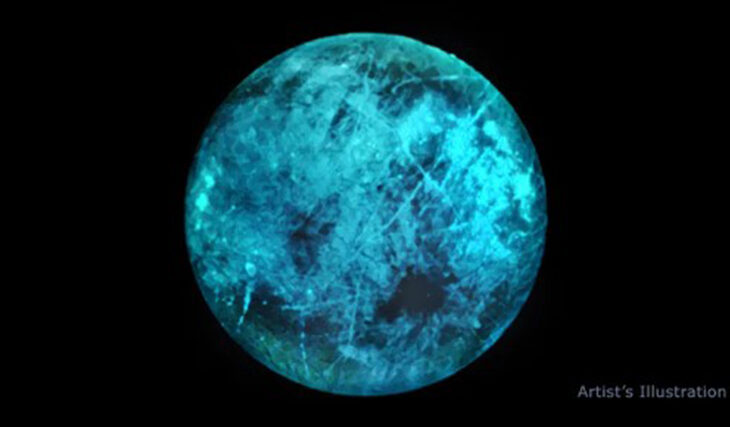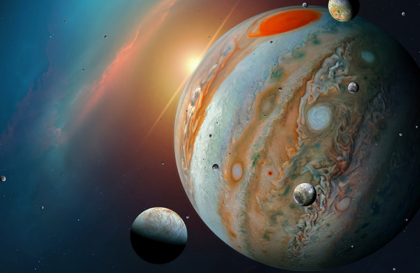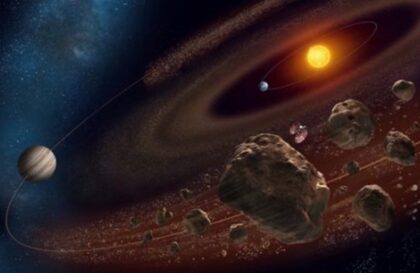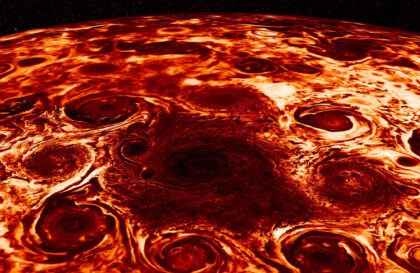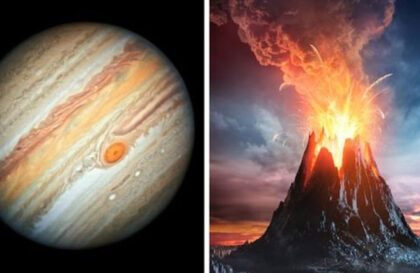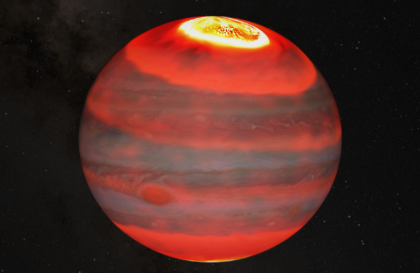Imagine a moon that glows continuously, even on its night side – the side facing away from the Sun. It’s more than just a cool visual effect. Jupiter’s moon Europa actually glows in the dark.
As the icy, ocean-filled moon Europa orbits Jupiter, it endures a relentless barrage of radiation. Jupiter fills Europa’s surface with electrons and other charged particles day and night, bathing it in high-energy radiation. But when these particles hit the moon’s surface, they can also do something otherworldly: make Europa glow in the dark.
Laboratory studies conducted in 2020 simulate the environment of the icy moon Europa, demonstrating its glow even at night. This phenomenon is visually fascinating and carries more than just an aesthetic effect.
Different salt compounds have been found to respond uniquely to radiation exposure, producing distinctive glows. This glow can range from a slight green to blue or white to the naked eye, varying in brightness depending on the composition of the material.
To analyze this phenomenon, scientists use spectrometry, separating light into spectra to correlate them with the different chemical compositions of the ice. Given Europa’s vast subsurface ocean that seeps through its thick icy crust, surface analysis could reveal hidden secrets.
Based on observations, scientists concluded that Europa’s surface could consist of a mixture of ice and commonly known salts on Earth, such as magnesium sulfate (Epsom salt) and sodium chloride (table salt). New research shows that incorporating these salts into water ice under conditions similar to those found in Europe and exposing it to radiation results in the glow.
Scientists knew about this effect. The shine is caused by energetic electrons penetrating the surface and charging the molecules underneath. When these molecules relax, they release energy through visible light. But scientists never imagined that salts in ice compositions change the glow. It was a pure coincidence.
Observing sodium chloride brine with significantly lower luminescence levels was the “aha” moment that changed the course of the study. Each type of ice had its spectrum.
If Europa were not under this radiation, it would look like our Moon – dark on the shadowed side. But because it is bombarded by radiation from Jupiter, it glows in the dark.
NASA’s Europa Clipper (launches 2024) mission will explore the surface of Europa with multiple flybys. While not aimed at searching for life, this mission will study whether Europa’s subsurface ocean could support life.
Banner image: This illustration of Jupiter’s moon Europa shows how the icy surface may glow on its nightside, the side facing away from the Sun. Variations in the glow and the color of the glow itself could reveal information about the composition of ice on Europa’s surface. Credit: NASA/JPL-Caltech
Image credit:
https://www.nasa.gov
